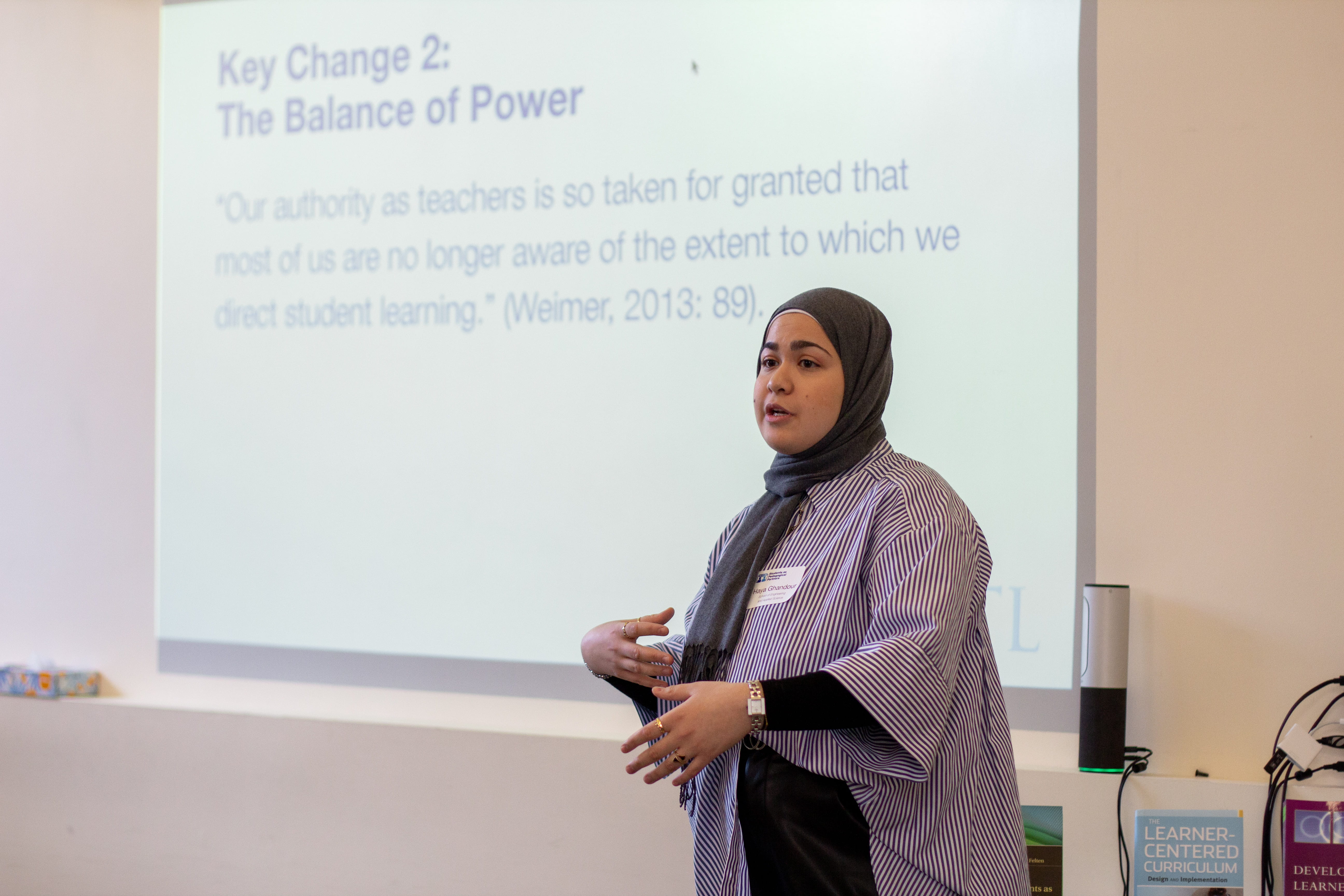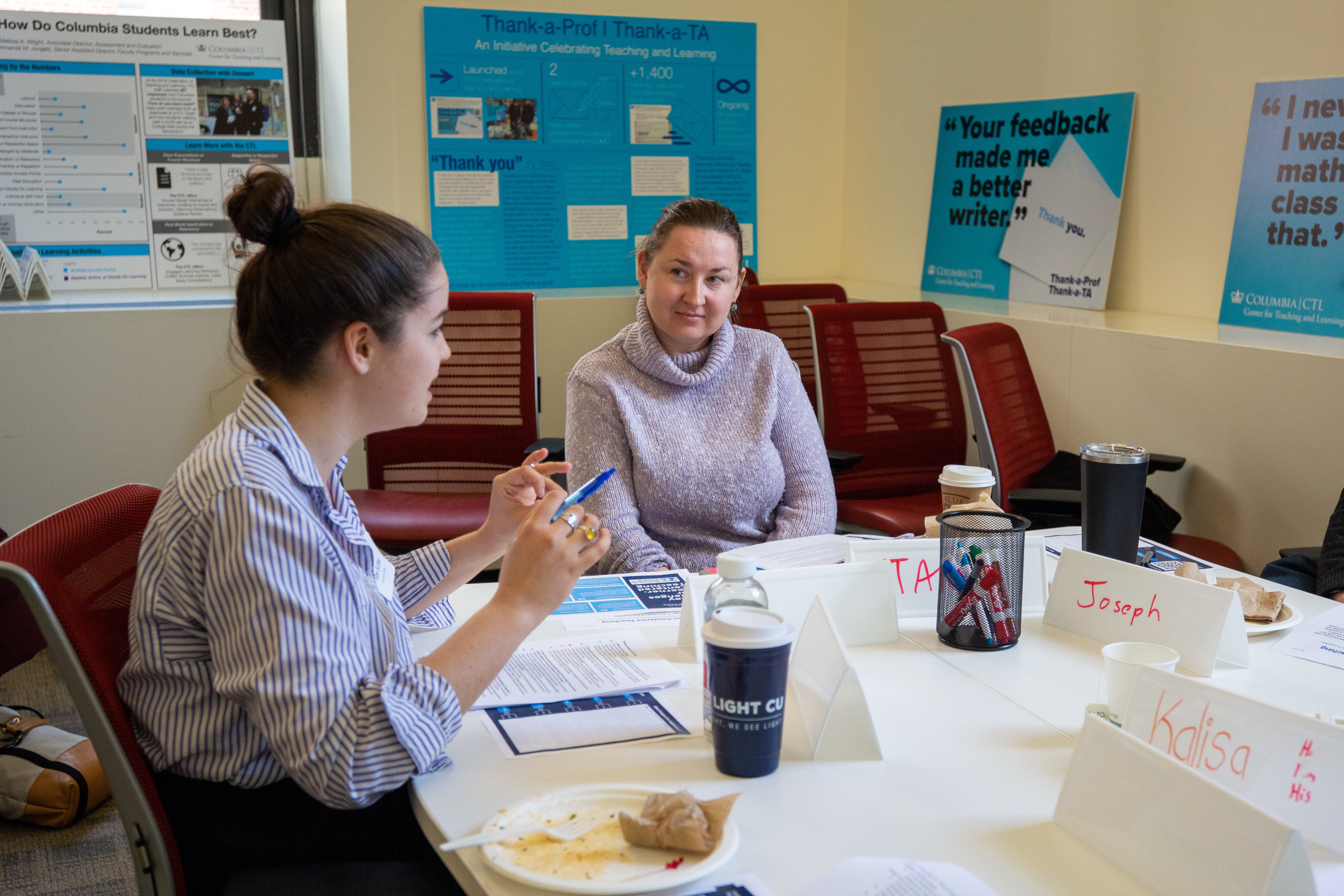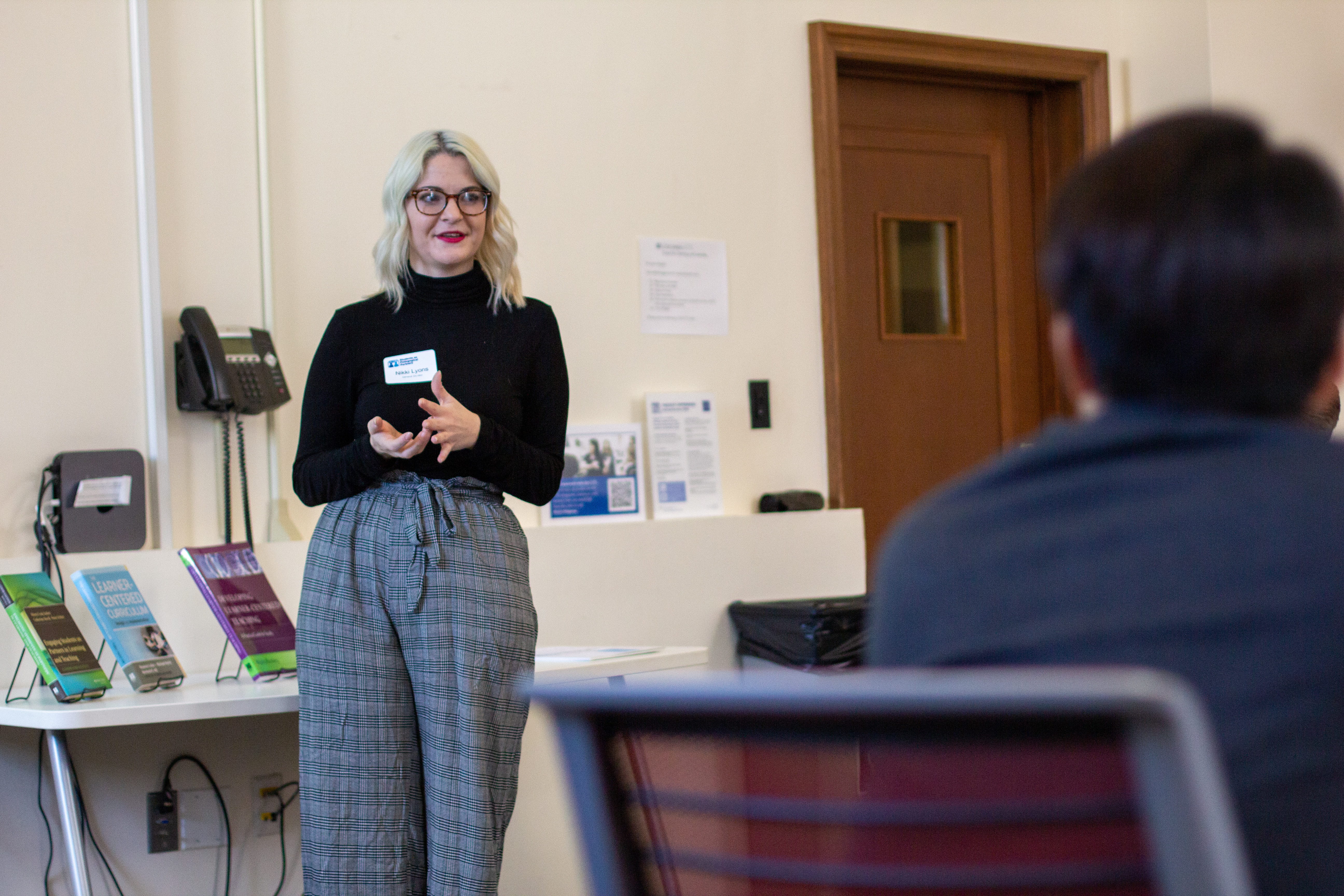Learner-Centered Teaching: What can I do in my classroom?
A resource co-created by CTL Undergraduate Student Teaching and Learning Consultants: Mae Butler, Donian Chyong, Jennifer Lee, Nicole Lyons, Samatha McAlevy, and Kalisa Ndamage, as part of the Students as Pedagogical Partners initiative.
Why may students resist learner-centered teaching?
Students may …
- Be more comfortable and used to following the expertise of the professor or have negative past experiences in courses attempting to implement learner-centered teaching.
- Feel nervous or stressed about taking on new responsibilities or work.
- Be concerned with grades or “failure,” especially when there is a lack of clarity around learning objectives and what knowledge they will be formally assessed on.
- Be unclear as to why classroom changes are occurring in terms of content, structure, and method.
How can professors lessen students’ resistance to learner-centered teaching?
Explanation and clarification:
- Explain why certain methods are being used in the classroom and the expected outcomes
- Clarify what the rights and responsibilities are for both the students and the faculty members
Encouragement and support:
- Show students that you believe in their ability to take on these responsibilities and encourage them to step out of their comfort zones
- Support students struggling with new learning processes and clarify learning objectives and expectations
Undergraduate Student Consultants, CTL staff and Columbia faculty at the “With Learners: Learner-Centered Teaching in the Undergraduate Classroom” workshop on February 28, 2020.
What changes can professors implement to promote learner-centered teaching?
Key Change 1: The Role of the Teacher
Presence
- Physically place yourself among students when possible instead of standing in front of them.
- Clearly communicate what type of availability you have outside of the classroom for questions, concerns, or chats.
Facilitation of learning
- Act as a moderator during debate or discussion. Encourage students to call on each other instead of deferring to you when choosing the next speaker.
- Be a source of information not only when it comes to content but also when it comes to skills and ways of learning. Ask students to challenge you.
- Be conscious of using jargon with the students. Encourage students to ask you to clarify new vocabulary or acronyms.
- Encourage collaboration and student teaching. If a student has a question, ask if there is another student who can answer. This can occur in-class and online (i.e. Piazza, Courseworks discussion posts, etc.).
Key Change 2: The Balance of Power
Engagement between faculty and learners:
- Establish a trusting relationship and allow students to be critical of their learning methods and the content they are studying.
- Ask students what they hope to gain from the course. By emphasizing the knowledge and skills students care most about throughout the course you can encourage learners to take ownership of the material.
- Alternate learning methods to have varying levels of responsibility put on the student throughout the course.
- Have students run discussions or present what they found challenging, interesting, and/or thought-provoking in readings.
Continuous feedback and encouraging ownership:
- Actively request feedback about teaching methods and learning experiences. Read the feedback with care and use it to discover what is working and what is not working for students.
- Have students work together to develop study guides.
- Outline options for review of material prior to an assessment, then gauge student opinion on what works best for them. These options could include preparing questions for the instructor, review presentations by students, or activities such as a jeopardy game.
- Give students assignment options to choose from so that they can engage with the material in a way that they are confident and excited about.
Key Change 3: The Function of Content
Engage student input:
- Invite students to identify material that they are most excited about and adapt the syllabus to their interests/strengths.
Make the connection clear:
- Connect material and skills learned to application and ways of utilization either to the students’ program of study, or some other higher goal. Make the connection between theory and practice.
- Have more in-class problem-solving sessions to use the content from the homework and readings actively.
- When framing course goals for the students, emphasize a clear distinction between “content” and more “procedural” knowledge and learning. This also often means exams will shift less from regurgitating content to more problems that require synthesizing knowledge/ideas from the course to solve new problems.
- Explain early on the meta-goals of the course besides mastering the content, and remind students periodically that the goal is more than just learning the facts presented.
Key Change 4: The Responsibility for Learning
Set the tone early on:
- Ask students to fill out a short survey at the beginning of the semester reflecting on how they learn best and what new modes of learning they are open to.
- Set some time during syllabus review to create classroom standards that students develop and commit to as a class. Make sure that these community standards are available to students (i.e. posted on CourseWorks or in the classroom).
Ownership and responsibility:
- Allow students to become stakeholders in the course objectives whenever possible by soliciting input and feedback throughout the course on the syllabus, lessons, assignments, and evaluations.
- Having students teach part of the material to their peers and present content, be it through leading discussions, presenting exercises, etc.
- Get to know students: Why did they sign up for the class? What do they hope to learn this semester? This can be done in class, office hours, or through email to help them take responsibility for their learning.
Key Change 5: The Purpose and Processes of Evaluation
Facilitate student success:
- Debrief assessments and exams. Talk through challenging sections, student experiences, and what could be done differently.
- Reduce stress and anxiety associated with exams. Include students: what would put their mind at ease and encourage success (without reducing fairness or rigor)?
- Have regular, low-stakes quizzes throughout the course that encourage students to stay engaged and assess their knowledge on an ongoing basis. Communicate the purpose of these quizzes to the students.
- Have students mark up either each others’ or a sample assignment (essays, exam questions, etc) as either peer-review or a way of studying/learning skills.
Include students in the evaluation process:
- Discuss the purpose of evaluation with students and outline goals: assess student knowledge, reasoning, performance under pressure, or something else?
- Invite students to contribute to planning the format and potential questions for exams.
Resources
Felder, R. M. (2011). Hang in There! Dealing with Student Resistance to Learner-Centered Teaching. Chemical Engineering Education, 45(2), 131-132.
Moore, C. S. (2018). Five Ways to Teach Students to Be Learning Centered, Too. Faculty Focus.
Weimer, M. (2013). Learner-Centered Teaching: Five Key Changes to Practice. Second Edition. San Francisco, CA: John Wiley & Sons.







